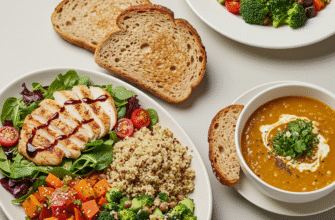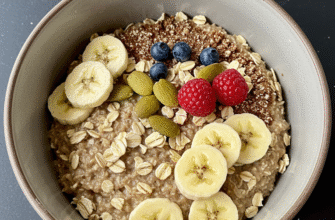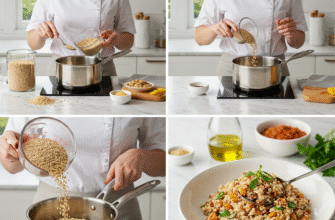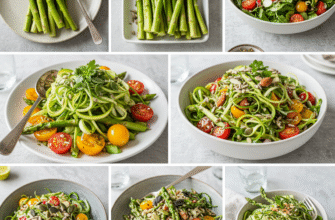Getting kids excited about vegetables often feels like trying to teach a cat to swim – challenging, messy, and likely to end with someone unhappy. But turning mealtime battles into fun food adventures isn’t impossible. It’s less about forcing bites and more about shifting the atmosphere around food from one of obligation to one of exploration and enjoyment. Remember, our goal isn’t just to get nutrients into them today, but to foster a positive, lifelong relationship with healthy eating. It starts with making the whole experience less of a chore and more of a playful discovery.
Get Little Hands Involved
One of the simplest, yet most effective ways to pique a child’s interest in food is to involve them directly. Kids, like adults, feel more invested in something they helped create. This doesn’t mean handing your five-year-old a sharp knife, but there are plenty of age-appropriate ways they can participate.
Take them grocery shopping. Turn the produce aisle into a treasure hunt. Ask them to find the reddest apple, the greenest broccoli, or a fruit they’ve never seen before. Letting them choose a new fruit or vegetable each week (within reason, of course) gives them a sense of ownership and makes them more likely to try it later. Frame it as an adventure: “Let’s find the ingredients for our super yummy dinner tonight!”
Let them help plan meals. Offer choices between two healthy options. “Would you like broccoli trees or carrot sticks with dinner tonight?” or “Should we have chicken stir-fry or baked fish this week?” This empowers them and respects their preferences, making them feel like active participants rather than passive recipients of whatever lands on their plate.
Assign kitchen tasks. Even very young children can help. Toddlers can wash fruits and vegetables in the sink (with supervision!), tear lettuce for salads, or stir ingredients in a bowl. Older kids can help measure ingredients, mash potatoes, set the table, or even help with simple chopping tasks if they’re ready and supervised. The more involved they are in the preparation, the prouder they’ll be of the final product and the more curious they’ll be to taste their own creation.
Make Food Fun to Look At
We eat with our eyes first, and kids are no exception! Presentation can make a world of difference between a rejected plate and an eagerly devoured meal. Think beyond just plopping food down.
Use cookie cutters. Who wouldn’t want to eat a star-shaped sandwich, a heart-shaped slice of melon, or a dinosaur-shaped piece of cucumber? Simple shapes can transform ordinary foods into something special and exciting. It takes minimal extra effort but yields maximum fun potential.
Play with color and arrangement. Create smiley faces with fruit slices, build ‘log cabins’ with celery sticks filled with nut butter and raisin ‘ants’, or arrange vegetables in rainbow patterns. A colorful plate is naturally more appealing. Think about serving dips in fun containers or arranging snacks on a platter like a work of art.
Give foods fun names. Broccoli florets become “dinosaur trees” or “superhero bushes.” Carrot sticks are “X-ray vision sticks.” A simple smoothie transforms into a “monster potion” or a “princess power drink.” This playful rebranding can spark imagination and make trying something new seem like part of a game rather than a nutritional requirement.
Introducing New Foods: Patience is Key
The dreaded standoff over trying something new. We’ve all been there. The key here is low pressure and persistence. Don’t expect love at first bite.
Implement a ‘one bite rule’ or ‘try it bite’. The rule isn’t about finishing the food, but simply about tasting it. No pressure beyond that initial taste. Celebrate the try, not the quantity consumed. Sometimes just getting over the initial hurdle of the unknown is the biggest challenge.
Pair new with familiar. Serve a small portion of a new vegetable alongside favorite foods. If your child loves chicken nuggets, add just one or two bites of steamed asparagus to the plate. The familiar comfort food makes the presence of the new food less intimidating.
Keep offering (without pressure). Research suggests it can take 10, 15, or even more exposures for a child to accept a new food. Don’t give up after one or two rejections. Offer the food again in a week or two, perhaps prepared differently (steamed carrots one week, roasted the next). Keep it casual and don’t make a big deal if they refuse it again. Consistency is more important than immediate success.
Remember the power of repeated exposure. It’s completely normal for children to need multiple encounters with a new food before they even decide to taste it, let alone like it. Patience and consistency are your allies in expanding their palate. Avoid making mealtimes a battleground over trying new things; keep the atmosphere positive and low-pressure.
Turn Healthy Eating into a Game
Kids learn best through play. Why not apply that principle to food?
Blindfolded taste tests. This removes visual bias. Can they guess if they’re eating an apple slice or a pear slice? A piece of bell pepper or cucumber? Make it silly and fun, focusing on describing textures and flavors.
The Rainbow Challenge. Encourage eating foods of different colors throughout the day or week. Create a simple chart and let them put a sticker next to each color they eat (red tomato, orange carrot, yellow banana, green spinach, blue/purple blueberries). This encourages variety in a visually engaging way.
Food exploration stations. Set up different textures and tastes for them to explore – something crunchy (crackers, celery), something smooth (yogurt, hummus), something sweet (fruit), something tangy (a lemon wedge to lick – carefully!). Let them touch, smell, and maybe lick or taste, focusing on sensory exploration rather than consumption.
Reward charts (used wisely). Instead of rewarding clean plates (which can encourage overeating), reward trying new foods or eating a vegetable without fuss. Use stickers or points towards a non-food reward, like extra playtime, a book, or a family outing.
You Are the Biggest Influence
Kids are expert mimics. They watch everything you do, including how you approach food.
Be a positive role model. Eat your own fruits and vegetables enthusiastically. Let them see you enjoying healthy meals. If you turn your nose up at Brussels sprouts, don’t be surprised if they do too. Talk positively about healthy foods – “Wow, these roasted sweet potatoes are so delicious and sweet!”
Avoid negative food talk. Don’t label foods as strictly “good” or “bad.” This can create unhealthy associations and guilt. Frame choices around what helps our bodies feel strong and energetic. Avoid complaining about your own diet or weight in front of them.
Eat together when possible. Family meals, even if they’re not every night, provide a structured, positive environment for eating. It’s a time to connect, talk about the day, and model healthy eating habits. Turn off the TV and put away phones to focus on each other and the food.
Focus on the Fun Factor
Sometimes, just changing the context can make healthy eating more appealing.
Theme nights. Taco Tuesday (with lots of veggie toppings!), Make-Your-Own-Pizza Friday (on whole-wheat pitas with veggie faces), Smoothie Sunday – themes add an element of fun and predictability that kids often enjoy.
Indoor picnics. Spread a blanket on the living room floor and serve typical picnic fare – sandwiches cut into shapes, fruit salad, veggie sticks with dip. The novelty of the setting can make familiar healthy foods seem more exciting.
Grow something edible. Even a small pot of herbs on the windowsill or a single tomato plant can teach kids where food comes from and make them more interested in tasting the results of their efforts.
Ultimately, making healthy eating fun is about shifting the focus from nutrients and rules to exploration, participation, and positive experiences. It requires patience, creativity, and consistency. Don’t get discouraged by setbacks. Celebrate the small victories – the day they willingly tried a bite of bell pepper, the meal where they helped wash the lettuce, the time they declared “dinosaur trees” to be yummy. By making food an adventure rather than a battle, you’re setting them up for a healthier, happier relationship with eating for years to come.








